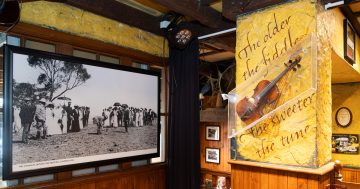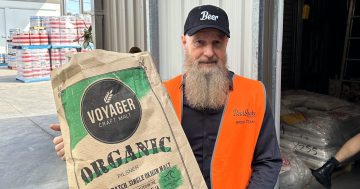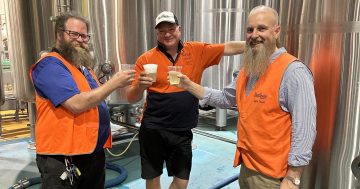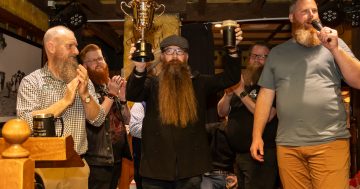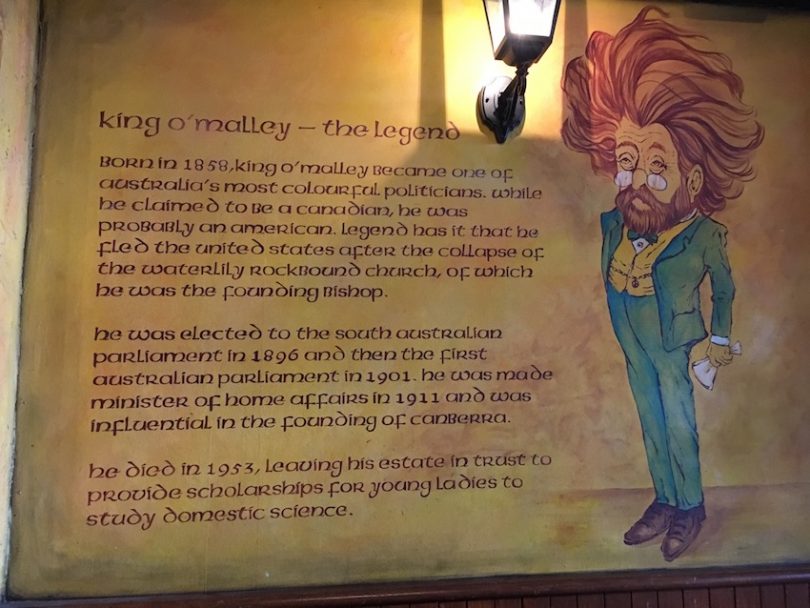
King O’Malley was a flamboyant character. Mural at King O’Malley’s Irish Pub, Canberra City. Photo: Marg Wade.
The popular Irish pub in Canberra’s city centre, King O’Malley’s, is a cheeky reference to its namesake, who was, in fact, a teetotaller.
So how does a teetotaller get a pub named after him?
King O’Malley was a flamboyant character with big auburn hair and beard. He wore smart clothes and had a great gift of self-promotion.
He was elected into the first Federal Parliament and became Minister for Home Affairs. He said he was born in Canada (but is believed to have been born in the US) so he could be elected to Parliament, the pre-requisite being that elected members had to be British citizens. He deflected suspicions about his eligibility and also allegations of fleeing the US after embezzling funds. He had a varied career that included selling insurance, mining speculation, journalism and he was even a ‘bishop’.
O’Malley started the Waterlily Rockbound Church – the Redskin Church of the Cayuse Nation, Texas in the US, where he was its first and only (self-elected) bishop. It was at that time he converted to following the temperance movement. He disliked alcohol, calling it ‘stagger juice’.
O’Malley was interested in social issues and the rights of women. Even with his temperance views, he lobbied for the law to ensure that barmaids be treated with respect because “innocent girls are back slapped and monkeyed with”.
As Home Affairs Minister, O’Malley played an important role in the selection of the site for Canberra. He was also a keen advocate for the selection of Walter Burley Griffin’s design from the competition that had attracted 137 entries worldwide.
In 1911, just a few short years after this area was chosen as the site for the new capital, and before the city was even named, O’Malley instigated that new liquor licences be banned.
He claimed alcohol had a depressing influence and said, “stagger-juice and efficient public business are absolutely incompatible”. So, O’Malley triggered a type of prohibition that was to continue until 1928. This was the very first ordinance passed in the new Federal Capital Territory.
Unlike the US-style prohibition, the laws only prevented the granting of liquor licences. Locals could still bring alcohol into the Territory and drink it here.
One anomaly was the Cricketers’ Arms Hotel (running from the 1860s until 1918). It was the Territory’s only pub and was already operating, so it got around the rules.
An irony, too, was that alcohol flowed freely at the naming of the city in 1913, and King O’Malley was a key participant in the formal proceedings. O’Malley’s efforts “that the Territory shall be dry” did not quite succeed as he had hoped.
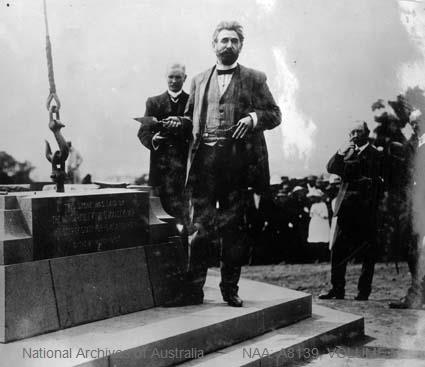
King O’Malley at the naming of Canberra in 1913. Photo: National Archives of Australia (A8139, VOLUME 5).
Queanbeyan benefited from the alcohol licence prohibition in Canberra. It became a town of five busy pubs. Canberrans would head over the border for a night on the town, particularly on Friday and Saturday nights. Reference has been made about the Queanbeyan policeman who didn’t want to make too many arrests of drunk and disorderly patrons because if he locked people up, his wife would have to cook them meals and she hated doing so.
The National Archives holds a fascinating glimpse into this time with digitised letters from organisations and individuals supporting prohibition.
Prime Minister Bruce did not attend a Returned Services dinner on Armistice Day in 1927 where alcohol was served, resulting in many letters supporting his “courageous attitude”.
Children were involved as well, writing letters to their local MPs. Young Albert Glassborow of Big Pats Creek, Victoria, asked that the “spread of strong drink be stopped in the National Capital … Once men taste it they spend all their money on it and many little children suffer through not having enough food and clothing”.
Yet a guidebook, ‘A Descriptive Guide to Canberra’, published for workers moving to Canberra in 1927, included a chapter specifically dealing with ‘The Liquor Question’. It advocated driving to Queanbeyan to bring grog back by the cartload, with the advice that “the majority of workmen thus inclined save their thirst till the week-end, then swoop down to Queanbeyan”.
And so it was that Canberra was dry for almost 18 years until a resolution was passed in 1926 by the Joint House Committee making way for a bar in the Provisional Parliament House.
A plebiscite was held in 1928, and King O’Malley’s 1911 ban on alcohol licences was overturned in the Federal Capital.
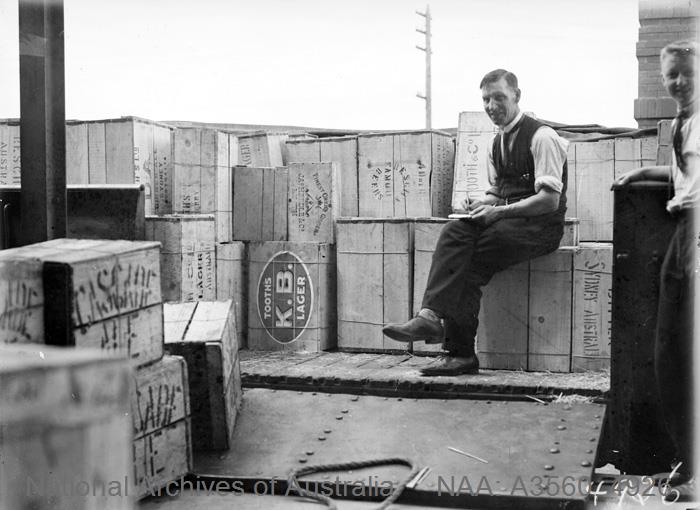
Prohibition ended in 1928. The first consignment of liquor following the lifting of prohibition in the Federal Capital Territory. Railway truckload of beer cases with a tally clerk. Photo: National Archives of Australia (A3560, 4926).
So when lockdown finishes, and we are free to go to the pub again, perhaps you can reflect on this part of Canberra’s history and why Canberra doesn’t have a pub on every corner. You can go to King O’Malley’s and check out the murals on the walls that also tell this story and the teetotaller that started it all, the flamboyant King O’Malley.
Original Article published by Marg Wade on The RiotACT.


